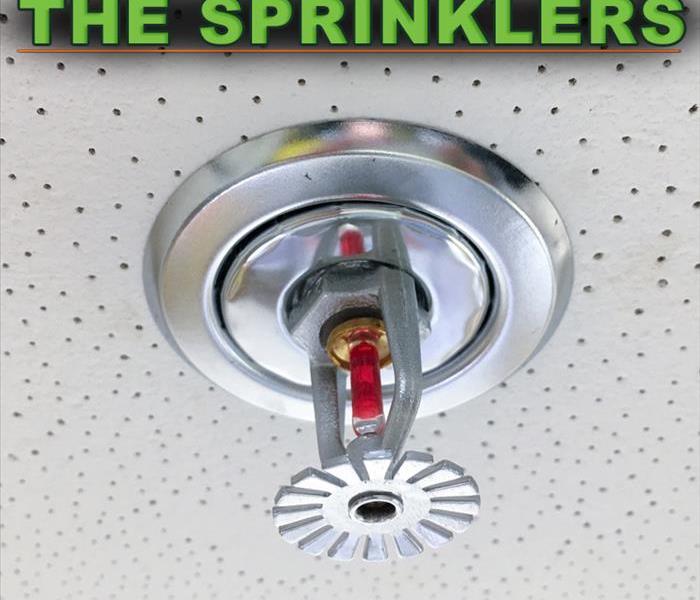5 Steps To Take if Fire Sprinklers Accidentally Go Off
7/1/2022 (Permalink)
 If the fire sprinkler system in your business is wrongly triggered, immediately shut off the water valve and call the experts.
If the fire sprinkler system in your business is wrongly triggered, immediately shut off the water valve and call the experts.
If Your Fire Sprinklers Go Off By Accident, Here Are Five Things You Should Do.
Business owners always want their building's sprinkler system to trigger water if a fire breaks out. If sprinklers happen to go off by accident, however, this can result in major flooding and an extensive effort to clean and repair the damage. Here are five important steps to take in the event that fire sprinklers are accidentally activated in your Rio Verde, AZ, property.
1. Shut off Water Valve
If there is no confirmed emergency, immediately locate the water control valve on the sprinkler system. Switch off the valve to stop the flow of water through the ceiling sprinklers. Acting quickly here can reduce the total business losses as a result of the sprinkler mishap.
2. Contact Water Damage Professionals
Once the sprinklers have been shut off, call a local company that offers water cleanup and remediation services. They will quickly respond to the incident, evaluate the total flooding damage, and begin the cleanup and repair process.
3. Inform Insurance Company
The next priority should be to inform your building's insurance company of the damage and open a claim. Do this promptly to determine if the damage and losses will be covered under your policy.
4. Undergo Restoration Process
Let the building restoration crew take the lead on cleaning up the flooding. The process involves the extraction of water, removal of wet items, disinfecting the space, and drying the building. From there, any remaining issues will be repaired, such as damaged ceilings and floors.
5. Perform Routine Maintenance To Prevent Future Issues
After the damage has been addressed and the building restored, be proactive about sprinkler maintenance to avoid another accidental flood. Plan a yearly inspection of the system to make sure everything is in working order.
If the fire sprinkler system in your business is wrongly triggered, immediately shut off the water valve, call a restoration team and your insurance company, let the restoration process unfold and then schedule regular system maintenance thereafter.



 24/7 Emergency Service
24/7 Emergency Service